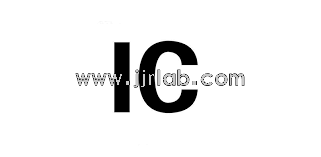
FCC-ID Certification for Wireless Product Export to the US
For companies engaged in the export of wireless products, FCC-ID certification is the "entry ticket" to the U.S. market. However, the complex testing procedures and cumbersome application process often raise many questions. This article will guide you step-by-step through the FCC-ID certification process—covering scope, testing standards, application steps, and common issues—to help you complete the process efficiently.

1. What Is FCC-ID Certification and Why Is It RequiRED?
The FCC (Federal Communications Commission)is the U.S. government agency responsible for regULating radio devices. All wireless products sold in the U.S. market—including those with WiFi, Bluetooth, 2G/3G/4G/5G capabilities—must obtain FCC certification.
FCC certification includes two types:
FCC-sdoc(Supplier’s Declaration of Conformity):
For general electronic devices without radio functions(e.g., chargers, lighting fixtures). Compliance is self-declared by the manufacturer.
FCC-ID(Mandatory Certification):
Required for devices with wireless transmission capabilities(e.g., smartphones, smartwatches, wireless earbuds, routers). Products must be tested by an FCC-authorized lab, and certified by a TCB (Telecommunication Certification Body).
Consequences of not obtaining FCC-ID certification:
1. Product may be detained or destroyed by U.S. Customs
2. Forced removal from Amazon and other e-commerce platforms
3. Fines up to \$200,000 per violation
2. Which Products Require FCC-ID Certification?
Core criterion: Does the product contain an RF (radio frequency) module?
Typical product list:
1. Smartphones, walkie-talkies, tablets
2. Bluetooth earbuds, smartwatches, wireless keyboards
3. WiFi routers, smart home devices (e.g., wireless cameras)
4. Drones, automotive radars, IoT terminals
5. Industrial equipment with 2.4GHz / 5.8GHz RF modules
Special cases:
1. If your product uses an FCC-certified RF module(e.g., a WiFi chip), you may apply for modular certification(authorization documents required).
2. Devices with multiple RF functions(e.g., Bluetooth + 4G) must test each frequency band separately.
3. FCC-ID Certification Process (with Timeline)
Step 1: Select an FCC-Accredited Lab
Ensure the lab is authorized to test your product’s RF features (e.g., 2.4GHz/5GHz, SAR capabilities).
Required documents: circuit diagrams, user manuals, RF spec sheets.
Step 2: Product Testing (Key Stage!)
Main test items:
1. ? Radiated Emissions (RE)
2. ? Conducted Emissions (CE)
3. ? RF Power, Bandwidth, Frequency Tolerance
4. ? SAR (Specific Absorption Rate — for body-worn devices)
5. ? Frequency Hopping Test (for Bluetooth devices)
Test duration:
1. 5–7 business daysfor standard products
2. 2–3 weeksfor complex devices
Step 3: TCB Report Preparation & Submission
After lab testing, the report is reviewed by a TCB agency.
Submission materials: application form, product photos, label design, circuit diagrams, user manual, etc.
Step 4: Receive FCC-ID Certificate
Once approved by TCB, a certificate is issued. You can verify your fcc id on the FCC website.
ID format: `XXXXX-XXXXXXXX`
Total time: Approximately 3–6 weeks, depending on product complexity.
4. FAQs and Pitfalls to Avoid
How long is an FCC-ID certificate valid?
The certificate is permanently valid. However, if there are hardware/software changes(e.g., new RF chip, altered output power), re-certification is required.
How should the FCC-ID label be displayed?
The FCC ID must appear on the product casingor electronic menuas:
`FCC ID: XXXXX-XXXXXXXX`
Label size and format must meet official standards (consult a professional if unsure).
Self-application vs. using an agent – which is better?
1. Self-application: Suitable for teams familiar with FCC regulations and capable of preparing English technical documents.
2. Agency support: Saves time and reduces the risk of technical document rejection. Highly recommended for first-time applicants.
What are the most common test failures?
1. Excessive radiation emissions(requires improved circuit shielding)
2. Frequency deviationbeyond tolerance (adjust crystal oscillator or RF settings)
3. Improper test mode settings(coordinate with the lab in advance)
FCC-ID certification is not a simple “submit-and-receive” process. From early-stage compliance planningto swift issue resolution during testing, every step affects your time-to-market. Choosing an experienced partner can help you navigate the process smoothlyand bring your wireless products to the U.S. market quickly and compliantly.
Email:hello@jjrlab.com
Write your message here and send it to us
 Amazon ISO/IEC 17025 UL Testing Service Laboratory
Amazon ISO/IEC 17025 UL Testing Service Laboratory
 How to get CE Certification for Lighting Products?
How to get CE Certification for Lighting Products?
 CE Certification Standards & Process for Elect
CE Certification Standards & Process for Elect
 Japan METI Registration & Japanese Agent Servi
Japan METI Registration & Japanese Agent Servi
 Temperature Shock Test (IEC 60068-2-14:2009)
Temperature Shock Test (IEC 60068-2-14:2009)
 Electromagnetic Compatibility (EMC) Testing Servic
Electromagnetic Compatibility (EMC) Testing Servic
 Canada ISED Certification (IC Certification) Analy
Canada ISED Certification (IC Certification) Analy
 CSA C22.2 No.42 Compliance Test Report for Amazon
CSA C22.2 No.42 Compliance Test Report for Amazon
Leave us a message
24-hour online customer service at any time to respond, so that you worry!




